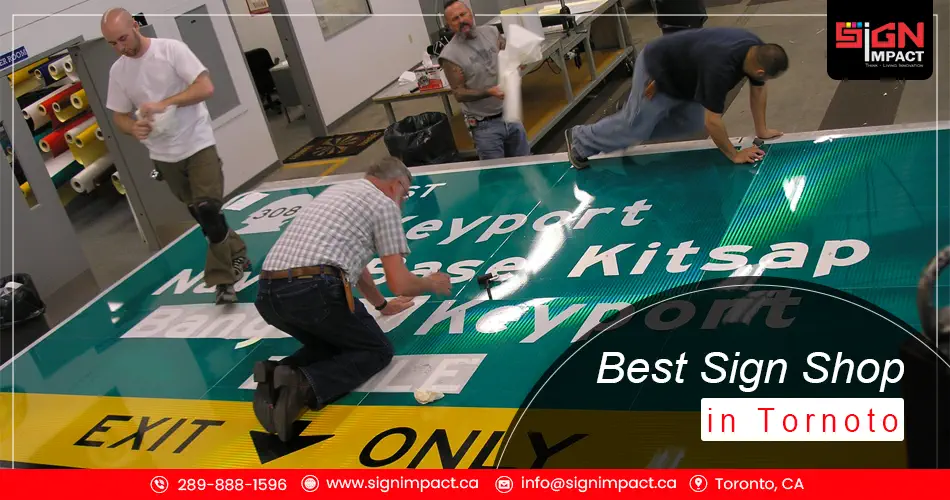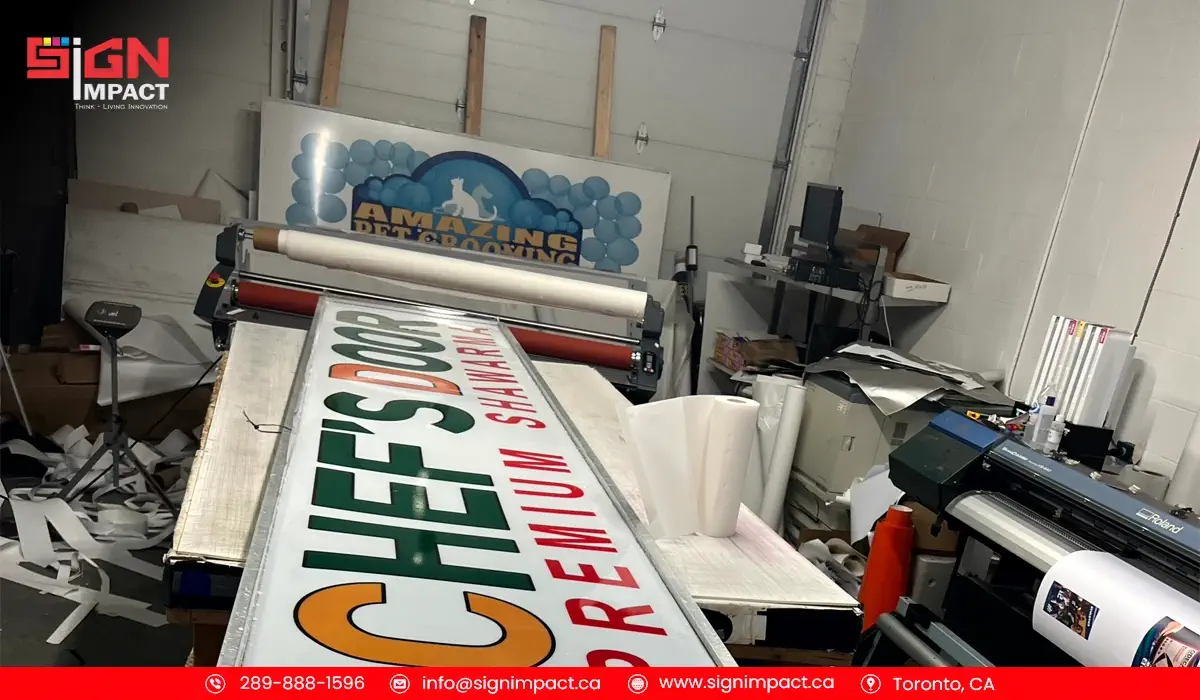Creating signs that capture attention is an art that combines creativity, clear messaging, and strategic placement. For businesses, an effective sign can serve as a powerful tool for attracting new customers and establishing brand presence.
A professional sign shop can help you design visually compelling signs that communicate your brand’s message in a memorable way. Here’s a guide on designing attention-grabbing signs to elevate your business visibility.
1. Understand the Purpose of Your Sign
Before designing, ask yourself what the sign’s main objective is. Are you promoting a special sale, directing foot traffic, or building brand awareness? A well-defined purpose will guide every aspect of your design, from layout and text to color choices. Our team at a skilled sign shop can help you align your sign’s purpose with design elements that maximize effectiveness.
2. Choose Colors That Stand Out
Bold, contrasting colors are effective in grabbing attention, especially when viewed from a distance. High-contrast pairs like black and yellow or blue and white. However, it’s essential to keep your brand’s color scheme in mind—your sign should be eye-catching but still consistent with your brand identity.
Consult with a professional sign shop to ensure your colors are both attractive and easy to read. They can offer guidance on the best color combinations for outdoor versus indoor signs.
3. Use Simple and Bold Fonts
The font on your sign should be bold, simple, and easy to read from a distance. Avoid decorative fonts for the main message, as they can be difficult to read. Choose sans-serif fonts, which offer clarity and a modern look, and use a large enough font size to catch the eye.
Font Selection Tip:
A good sign shop can recommend fonts that align with your brand and are optimized for readability. They can show you examples of past projects to give you a better sense of what works.
4. Limit the Text and Focus on Key Words
To make your sign readable at a glance, limit the amount of text. People should understand your message quickly, ideally within a few seconds. Use key phrases or words to convey the message clearly, such as “SALE,” “OPEN,” or “NEW ARRIVALS.” If needed, add a short line or two with essential information, like your business hours or website.
An experienced sign shop can help you refine your text to the essential elements, ensuring a clean, uncluttered look that’s easier for people to absorb on the go.
5. Incorporate Images or Icons Wisely
Adding icons or images can enhance a sign’s visual appeal, but they should be relevant to your message. For instance, a coffee cup icon works well for a café, while a shopping cart can be effective for retail stores. These simple visuals add to the message without cluttering the design.
Image Guidance:
Your sign shop can suggest icons or images that add value without taking away from the clarity of your sign. They’ll ensure any images are high-quality and suited to the sign’s environment.
6. Prioritize Readability from Different Distances
When designing a sign, consider how far away potential viewers will be. For roadside signs, larger fonts and high-contrast colors are critical, while indoor signs can use smaller fonts and more detail. Always test the readability of your sign from different angles and distances.
Readability Test:
Most sign shops will provide a mockup of your sign to test readability in its intended location. This way, you can adjust font size, spacing, or colors before the sign is finalized.
7. Use Lighting to Enhance Visibility
Lighting can make a huge difference in the visibility of your sign, especially if it’s located outdoors or in a dim area. LED lights or backlit signage can add extra visibility and draw attention to your message even at night. You can also consider neon signs for a bright, vibrant look.
Lighting Options:
Ask your sign shop about lighting options that work with your sign’s design. They can guide you in selecting lighting that’s both functional and visually appealing.
8. Position Your Sign Strategically
The location of your sign is as important as its design. Position it in a place where it can be easily seen, whether that’s above eye level, on a busy street, or directly in front of your storefront. Consider the natural flow of foot or vehicle traffic when deciding on placement.
Placement Insights:
A knowledgeable sign shop can offer advice on optimal positioning, whether you’re planning to place your sign indoors or outdoors. They’ll ensure your sign is strategically placed to reach the most eyes.
9. Keep Branding Consistent
While your sign should stand out, it should also represent your brand consistently. Incorporate your logo, brand colors, and any design elements that align with your other marketing materials. This approach creates a cohesive brand image that helps customers recognize your business at a glance.
Branding Support:
If you need guidance on how to incorporate branding, a sign shop can help you integrate logos and brand elements without compromising readability.
10. Regularly Update and Maintain Your Signage
Regularly check your signs for wear, and consider updating the design periodically to keep it fresh and relevant. For instance, you might want seasonal signs or new designs for special events.
Maintenance Assistance:
To keep your signs looking their best, a lot of sign shops provide maintenance services. They can also advise you on durable materials to withstand weather and wear, ensuring your signs look professional year-round.
Conclusion
Effective signage design requires a balance of creativity, clarity, and strategic placement. By following these tips and working with a reputable sign shop, you can create signs that attract attention, enhance brand recognition, and invite customers to engage with your business. A well-designed sign does more than convey information—it reflects the quality and identity of your brand, making it a valuable asset in today’s competitive market.
Read Also: DIY Ideas for Making Your Own Home or Garden Signs



